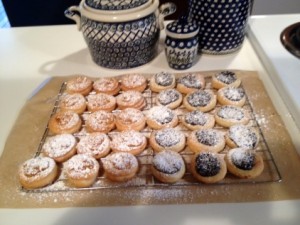Background provided by NN : NN was born and raised in Southern California. They were raised in a Chinese-American household and experienced many different forms of folklore.
Context: NN was approached about folklore, they conveyed it through a telephone call. NN says that her father tells this tale whenever they are lazy. They also revealed that this particular folklore had evolved to be a joke after they learned how to cook and bake.
Main Piece Transcription of interview (contains the context of particular performance and additional background information):
NN: “ So … like … my dad tells me this story … ALL the time. He usually tells me … when he thinks I am being … lazy, or whatever. The story kinda … always begins … with “There was once a rich man” (accompanied by air quotes) who had … like everything done for him. He never had to … umm … lifted a finger … like AT ALL. Servants … wiped his butt, like … fed him, they did everything for him. (Pauses for effect) One, day, after he got married his, ummm … wife had to … like … uhh … visit her family for the … the … holiday. She baked her husband a large cookie, and like put in on … a … string and put it on around his neck. AND she left to visit her family … for … like a week. When she came back home, she … her husband was dead. Like … he was in the same position … like when she left him … and like the cookie around his neck was not eaten. He was too lazy … to even lift the cookie … to like … eat … so he died. My dad would always say something, like … (deepens voice to imitate their father) “See … work won’t kill you, but being lazy will. Do you want to have someone bake your cookie for you … or what.”
Analysis: This particular short story is has morbid humor. The laziness of the man is obviously dramatized to highlight the importance of hard work. It seems like the story is told orally and had even evolved into a joke amongst close family members. The moral of the story remains despite the context of the perfomance. It also acts as a representation of Chinese values. The lazy man can also be interpreted as subtle commentary on the partriarchal society. The wife had provided substance for her husband, but his choice led to his own demise. Another interesting layer to this tale is the financial component; the lazy man had never done anything for himself because he had the financial means to outsource all his tasks. This tale could have originated from the working-class as way of encouraging their chidren to embrace work instead of focusing on the scarcity of money.


